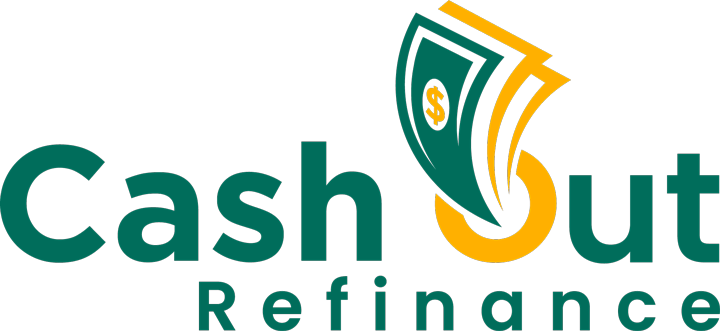Unlocking Your Property’s Equity: Second Home Cash-Out Refinance
Owning a second home can be a valuable investment, whether it’s a vacation getaway, rental property, or an additional residence for family members. If you’ve built up equity in your second home, a cash-out refinance can provide access to that equity for various financial needs, such as renovations, investments, or debt consolidation.
This guide will cover everything you need to know about second home cash-out refinancing, including:
✅ What is a Second Home Cash-Out Refinance?
✅ Eligibility Requirements
✅ How Much Cash Can You Access?
✅ Interest Rates & Loan Terms
✅ Benefits & Risks
✅ How to Use the Funds
✅ Steps to Apply for a Second Home Cash-Out Refinance
✅ Alternatives to Cash-Out Refinancing
✅ FAQs
What is a Second Home Cash-Out Refinance?
A second home cash-out refinance is a mortgage refinancing option that allows homeowners to replace their existing loan with a new one for a higher amount while withdrawing the difference in cash.
💡 Example:
- Current Mortgage Balance: $200,000
- Home Value: $500,000
- New Loan Amount (75% LTV): $375,000
- Cash Received: $175,000 (minus closing costs)
This process leverages home equity to provide liquidity while maintaining ownership of the property.
Eligibility Requirements for a Second Home Cash-Out Refinance
Lenders have stricter requirements for second homes compared to primary residences. Here’s what you’ll need to qualify:
✔ Property Designation: Must be classified as a second home, not an investment property.
✔ Loan-to-Value (LTV) Ratio: Typically, lenders allow up to 75% LTV, meaning you must retain at least 25% equity in the home.
✔ Credit Score: Minimum 620–700, but higher scores (740+) qualify for better rates.
✔ Debt-to-Income (DTI) Ratio: Should not exceed 43%–50% (varies by lender).
✔ Loan History: Must have held the current mortgage for at least 6 months before refinancing.
✔ Sufficient Income & Reserves: Many lenders require 6–12 months of mortgage reserves for a second home.
💡 Key Takeaway: Second home refinancing comes with stricter guidelines than primary residences, so strong credit and equity are essential.
How Much Cash Can You Access?
The loan-to-value (LTV) limit determines how much cash you can withdraw:
- Primary Residence Cash-Out Refinance: Up to 80% LTV
- Second Home Cash-Out Refinance: Typically up to 75% LTV
- Investment Property Cash-Out Refinance: Usually up to 70% LTV
Example Calculation for a Second Home:
- Home Value: $600,000
- 75% LTV Limit: $450,000
- Existing Mortgage Balance: $250,000
- Potential Cash-Out Amount: $200,000 (minus closing costs)
💡 The more equity you have, the larger your potential cash-out amount.
Interest Rates & Loan Terms for a Second Home Cash-Out Refinance
Since a second home presents more risk to lenders, interest rates are slightly higher than those for primary residences.
Typical Interest Rate Factors:
✔ Credit Score: Higher scores qualify for lower rates.
✔ LTV Ratio: Lower LTVs may receive better interest rates.
✔ Loan Type: Fixed-rate and adjustable-rate options available.
✔ Loan Term: 15-year or 30-year options impact interest rates.
💡 Tip: A higher credit score and a lower LTV improve loan terms and lower interest rates.
Benefits of a Second Home Cash-Out Refinance
✔ Access to Lump Sum Cash: Use your home’s equity without selling the property.
✔ Lower Interest Rates vs. Personal Loans: Mortgage rates are typically lower than personal loan or credit card rates.
✔ Flexible Use of Funds: Funds can be used for various purposes like home improvements, investments, or debt consolidation.
✔ Potential Tax Benefits: Mortgage interest may be tax-deductible if used for home renovations (consult a tax advisor).
✔ Consolidate Debt: Roll high-interest debt into a lower-rate mortgage.
💡 A cash-out refinance is a cost-effective way to access funds compared to personal loans or HELOCs.
Risks of a Second Home Cash-Out Refinance
❌ Higher Monthly Payments: A larger loan balance means higher monthly mortgage payments.
❌ Closing Costs: Typically 2%–6% of the loan amount, reducing the cash received.
❌ Risk of Foreclosure: Failure to repay could result in losing your second home.
❌ Stricter Loan Terms: Interest rates and requirements are often less favorable than primary residence loans.
❌ Potential Impact on Future Borrowing: A higher mortgage balance can affect your ability to secure future loans.
💡 Evaluate your long-term financial stability before proceeding with a cash-out refinance.
How to Use the Funds from a Second Home Cash-Out Refinance
🏡 Home Renovations & Upgrades – Improve your second home’s value and appeal.
📈 Real Estate Investments – Use funds to buy rental properties or expand your portfolio.
💳 Debt Consolidation – Pay off high-interest debt for better financial management.
🛫 Vacation & Travel – Fund dream vacations or major life experiences.
🎓 Education Expenses – Pay for college tuition or private school costs.
💰 Emergency Fund – Build a financial safety net for unexpected expenses.
💡 Choose a use case that aligns with your financial goals.
Steps to Apply for a Second Home Cash-Out Refinance
Step 1: Determine Your Home Equity
✔ Calculate current home value and existing mortgage balance.
✔ Ensure you meet LTV ratio requirements (typically max 75%).
Step 2: Check Your Credit Score & DTI Ratio
✔ Ensure credit score is 700+ for the best rates.
✔ Keep DTI below 43% to increase approval chances.
Step 3: Compare Lenders & Loan Options
✔ Research multiple lenders to find competitive rates and terms.
✔ Get pre-approved to understand borrowing potential.
Step 4: Submit a Loan Application
✔ Provide income verification, tax returns, and property documents.
✔ Await underwriting approval and home appraisal.
Step 5: Close on the Loan & Receive Funds
✔ Pay closing costs (2%–6% of the loan amount).
✔ Receive cash-out funds after closing.
💡 Working with an experienced mortgage lender can simplify the process.
Alternatives to a Second Home Cash-Out Refinance
If a cash-out refinance doesn’t fit your needs, consider these alternatives:
1. Home Equity Line of Credit (HELOC)
✔ Flexible line of credit instead of a lump sum.
✔ Variable interest rates.
✔ Only pay interest on the amount used.
2. Home Equity Loan
✔ Fixed interest rate and set monthly payments.
✔ Lower risk than refinancing the entire mortgage.
✔ Best for borrowers needing a one-time lump sum.
3. Personal Loan or Business Loan
✔ Faster approval process.
✔ No property risk (no liens on home).
✔ Higher interest rates than a mortgage.
💡 Each alternative has different risks and benefits—choose based on your financial goals.
Frequently Asked Questions (FAQs)
Can I cash-out refinance an investment property instead of a second home?
✔ Yes, but LTV limits are lower (typically 70%), and interest rates may be higher.
How long do I have to own my second home before refinancing?
✔ Most lenders require at least 6 months of ownership.
Do I need an appraisal for a second home cash-out refinance?
✔ Yes, lenders require a full home appraisal to determine current market value.
Is cash-out refinancing worth it?
✔ It depends on interest rates, equity, and financial goals—consult with a mortgage expert.
Final Thoughts: Is a Second Home Cash-Out Refinance Right for You?
🏡 A second home cash-out refinance can be an excellent way to access equity for financial growth, property improvements, or debt consolidation.
💡 Considering a second home refinance? Speak with a mortgage lender today to explore your options!


